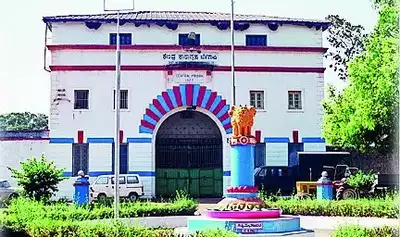With a rich history dating back to 1923, Hindalga Central Jail in Belagavi stands as a testament to India’s struggle for independence. Initially constructed to accommodate the brave freedom fighters of the Indian freedom movement, this monumental jail has played a significant role in shaping the nation’s past. Today, as a 100-year-old establishment, it continues to be one of the largest prisons in the country, carrying forward the legacy of our nation’s historic journey.
Covering an expansive area of approximately 99 acres on the outskirts of Belagavi, Hindalga Central Jail boasts a capacity to accommodate around 1,200 prisoners. Notably, it holds the distinction of being the sole jail in Karnataka authorized for the execution of death-sentenced criminals. However, despite this authorization, the jail has not witnessed any executions in the past four decades, marking a noteworthy aspect of its history.
To ensure law and order during the non-cooperation movement and the Dandi March led by Mahatma Gandhi, the British authorities found it necessary to establish a robust and secure prison. This facility served as a confinement for both freedom fighters and other offenders. Notably, numerous impassioned freedom fighters, seeking justice and protesting against British government offices, were held within its confines, adding to its historical significance.
Amidst their acts of picketing and disrupting railway tracks, numerous freedom fighters engaged in protests during that period. As a result, Hindalga jail housed a significant cohort of brave individuals who fought for India’s independence. Among them were notable names like Mylara Mahadevappa, Andanappa Doddameti, Mahadev Desai, Adavi Basappa, Annu Guruji, Venkosa Bhandage, Haldal Kotrappa, Tammaji Mirajakar, and Wali Channabasappa, marking a pivotal chapter in the jail’s history.
The corridors of Hindalga jail echo with the memories of its renowned inmates, including Vinayak Damodar Savarkar, who spent 100 days here from April 4, 1950, to July 13, 1950. A long-standing demand from locals urges the installation of Savarkar’s statue at the jail’s entrance, commemorating his significant presence.
Within the premises lie three gallows, carrying the weight of a grim history. Notably, the last hanging in the jail took place on November 9, 1983, involving Hanumappa Mariyal from Gokak. Prior to that, six executions occurred in 1976, followed by five in 1978.
Presently, Hindalga jail accommodates several convicts on death row, among them four members of Veerappan’s gang. Additionally, notorious criminals, including serial rapist and killer Umesh Reddy, and suspected SIMI activists, find themselves confined within its walls.
At present, 27 inmates await their fate under death sentences. Petitions seeking clemency are pending before the courts, while some are awaiting consideration by the President. This multi-faceted jail has also served as a backdrop for various film productions, including the Kannada movie ‘Minchina Ota’ and the Hindi movie ‘Mohra’, making it an intriguing part of both history and cinema.





















